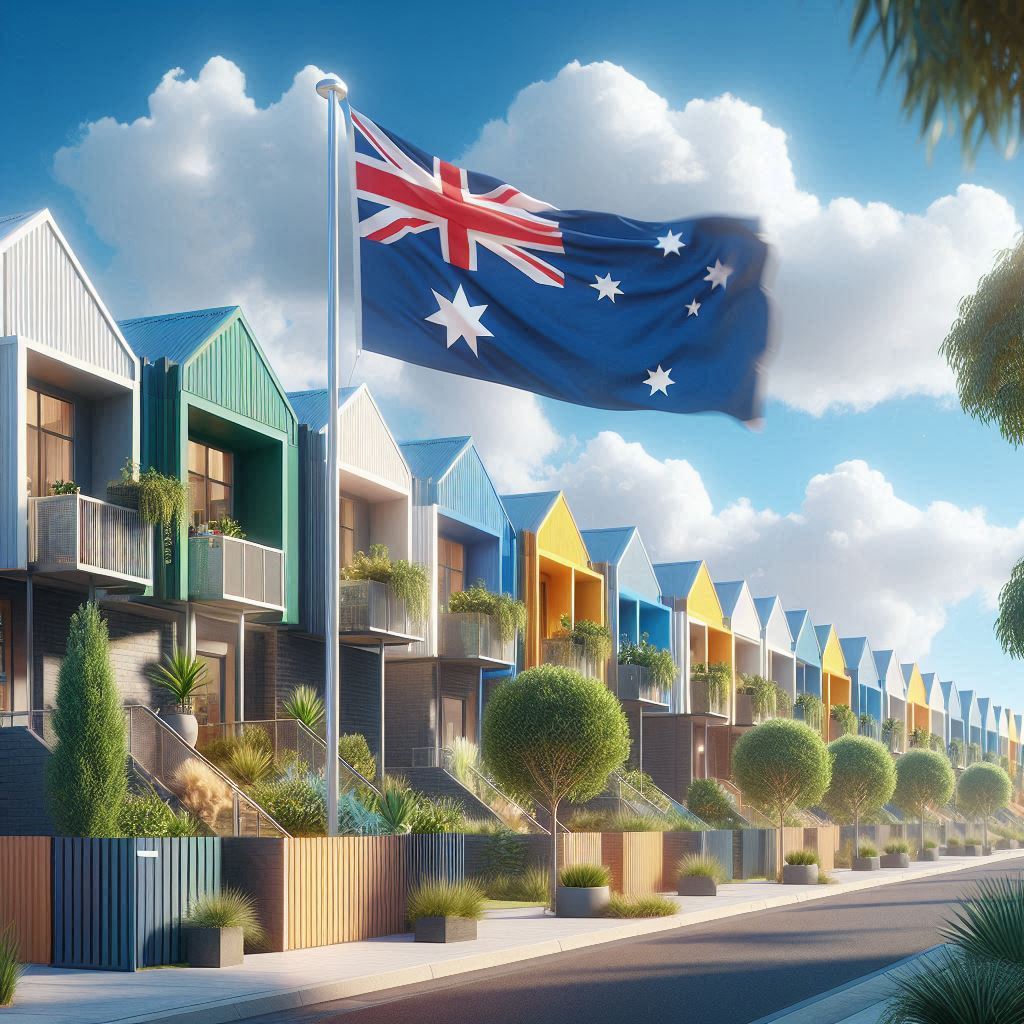Could Australia’s social housing revolution be a model for the world?
As the global housing crisis intensifies, countries around the world are scrambling to find sustainable, scalable solutions to accommodate growing urban populations and alleviate homelessness. In the midst of this challenge, Australia is making headlines with a number of bold, large-scale social housing initiatives. These developments not only signal a renewed commitment to providing secure, affordable homes, but also stand in sharp contrast to the often inadequate efforts seen in other developed nations, writes John Ridgeway.
From Sydney to Queensland, Australia is demonstrating how visionary urban planning and investment in public infrastructure can yield long-term benefits for both individuals and communities. But how do these Australian efforts compare to social housing initiatives in other parts of the world?
In recent years, Australian governments at both federal and state levels have made substantial investments in social and affordable housing. Rising property prices, growing homelessness and a surge in demand for rentals have placed immense pressure on housing markets across the country. In response, Australia has rolled out several flagship projects aimed at tackling these challenges head-on.
One of the most talked-about is the Waterloo Estate redevelopment in Sydney. Positioned in the heart of the city, this project is set to become the largest affordable housing initiative in the country. The plan involves transforming the existing public housing estate into a vibrant new precinct comprising over 3,000 homes.
What makes this redevelopment particularly noteworthy is its balanced approach to housing diversity. Of the 3,000+ new homes, around 50% will be dedicated to social and affordable housing. The project also emphasises community engagement, sustainable urban planning and the integration of green spaces, making it a prototype for future developments.
Another landmark project is Queensland's Woree Development, which aims to deliver 490 new homes. Announced by Prime Minister Anthony Albanese, this is the state's largest social and affordable housing initiative to date. The project is tailored specifically to support older Australians seeking to downsize, thereby freeing up larger homes for families and creating a more efficient housing allocation system.
The Woree project is a practical example of how targeted housing strategies can address multiple community needs simultaneously. By focusing on older residents, the initiative also helps mitigate social isolation, a growing issue in aged populations.
Ecco Ripley, Ipswich (Queensland)
Another development, Ecco Ripley stands as a testament to forward-thinking, large-scale urban planning. Located in the City of Ipswich, Queensland, this master-planned community is designed to eventually house up to 120,000 people across 50,000 homes. It is Australia's largest ever master-planned community and has been awarded a Green Star rating by the Green Building Council of Australia for its commitment to sustainability.
Although not strictly a social housing project, Ecco Ripley incorporates a mix of housing options, including affordable and social housing, into its design. This integration ensures a balanced community structure and reflects a holistic approach to urban development.
All this has happened as a result of several factors, which have converged to elevate the issue of social housing on the national agenda in Australia. Most significantly, major cities like Sydney and Melbourne are now among the most expensive in the world, pushing even middle-income earners out of the housing market. As a result the number of Australians experiencing homelessness has been steadily increasing, exacerbated by the COVID-19 pandemic.
An ageing population and an increase in single-person households have also changed the types of housing needed. This has coincided with recent shifts in political leadership at the federal level, which have brought housing issues to the forefront, with governments pledging billions in funding for public housing.
Comparing Australia with other countries
While Australia is making commendable strides, how does its social housing strategy compare with global efforts? The UK is a good example and has a long history of public housing, known as council housing. However, in recent decades, the sale of council homes under the "Right to Buy" scheme and limited new construction have led to a significant shortfall in affordable homes. Efforts have been made to reverse this trend, such as the Affordable Homes Programme, but critics argue these measures are too little, too late.
In comparison, Australia's current initiatives appear more aggressive and better integrated with urban planning principles. The focus on mixed-use developments and community engagement in projects like Waterloo Estate shows a more modern and inclusive approach.
United States
In the U.S., public housing is often stigmatised and underfunded. The Housing Choice Voucher Program (Section 8) provides some relief, but waitlists are long, and availability is limited. Many American cities are facing a severe housing shortage, with homeless populations reaching record highs in cities like Los Angeles and San Francisco.
Australia's centralised, government-led approach to developing large-scale projects presents a stark contrast. While the U.S. relies heavily on public-private partnerships, Australia's model includes a more balanced mix of government initiative, community input and private sector involvement.

Singapore
Singapore is frequently held up as a gold standard for public housing. Over 80% of its population lives in Housing and Development Board (HDB) flats, which are high-quality, government-subsidised units. The HDB system promotes homeownership, social integration, and community building.
While Australia does not match Singapore in scale or policy cohesion, projects like Ecco Ripley indicate a move towards similarly integrated and long-term planning. However, Singapore's success also comes from strict regulation and a strong central government, factors that are harder to replicate in Australia’s more decentralised political structure.
Germany
Germany takes a different route, focusing on rental affordability rather than ownership. Rent control laws and government support for non-profit housing associations keep rents manageable. Cities like Vienna in neighbouring Austria are renowned for social housing that blends seamlessly with private developments, avoiding stigmatisation.
Australia is beginning to incorporate some of these lessons, particularly in terms of design and community integration. However, rent control remains a contentious issue in Australia, and the focus still leans more towards building than regulating existing stock.
However, one area where Australia is showing true leadership is in the integration of technology and sustainability in social housing developments. Many new projects incorporate energy-efficient building techniques, solar panels, water recycling systems and public transport accessibility.
For example, the Ecco Ripley development includes a strong emphasis on environmental design, walkability and access to green spaces. These features not only improve residents’ quality of life, but also contribute to broader environmental goals.
The use of digital modelling, like Building Information Modelling (BIM), in planning and executing these projects also increases efficiency, reduces waste and ensures that construction stays on schedule and within budget.
Challenges and criticism
Despite the ambitious nature of these projects, not everything is rosy. Critics argue that while these developments are impressive, they are still insufficient to meet growing demand. Waiting lists for public housing remain long, and some worry that the pace of construction is not fast enough to address urgent needs.
Moreover, the risk of gentrification and displacement is a concern in urban renewal projects like Waterloo Estate. Long-term residents fear being priced out or losing their community networks in the name of modernisation.
To mitigate these issues, transparency, community involvement, and robust relocation policies must be central to all redevelopment efforts. That said, Australia's recent efforts provide a number of valuable lessons for countries grappling with housing crises:
As a result, Australia is undergoing a social housing transformation that offers hope and a blueprint for other nations. By investing in large-scale, thoughtfully designed and community-focused projects, the country is addressing not only its housing shortage, but also social inequality and urban sustainability.
While challenges remain, the scope and ambition of projects like Waterloo Estate, Woree Development and Ecco Ripley reflect a nation that recognises housing as a fundamental right. As other countries watch these developments unfold, there’s a clear opportunity to learn, adapt, and replicate the best practices emerging from down under.
In the end, housing is more than just shelter - it’s the cornerstone of a stable, inclusive society. Australia’s renewed focus on social housing could well inspire a global shift towards smarter, more compassionate urban development.
Additional Blogs

Are architects losing their influence in the digital era?
For decades, architects have been the central creative force in construction, shaping the buildings we see and the way projects are conceived, communicated and delivered. Their role has been...
Read moreWhy the word “Innovation” has lost its meaning in construction
“Innovation” has become one of the most overused terms in construction. It appears in the dozens of press releases we receive each day, conference talks and project reports, often without any real...
Read more

Retrofit fatigue and are we asking too much of old buildings?
As the world pushes toward net-zero emissions, the pressure to decarbonise our built environment is more intense than ever. Governments, developers and building owners are investing heavily in energy...
Read more